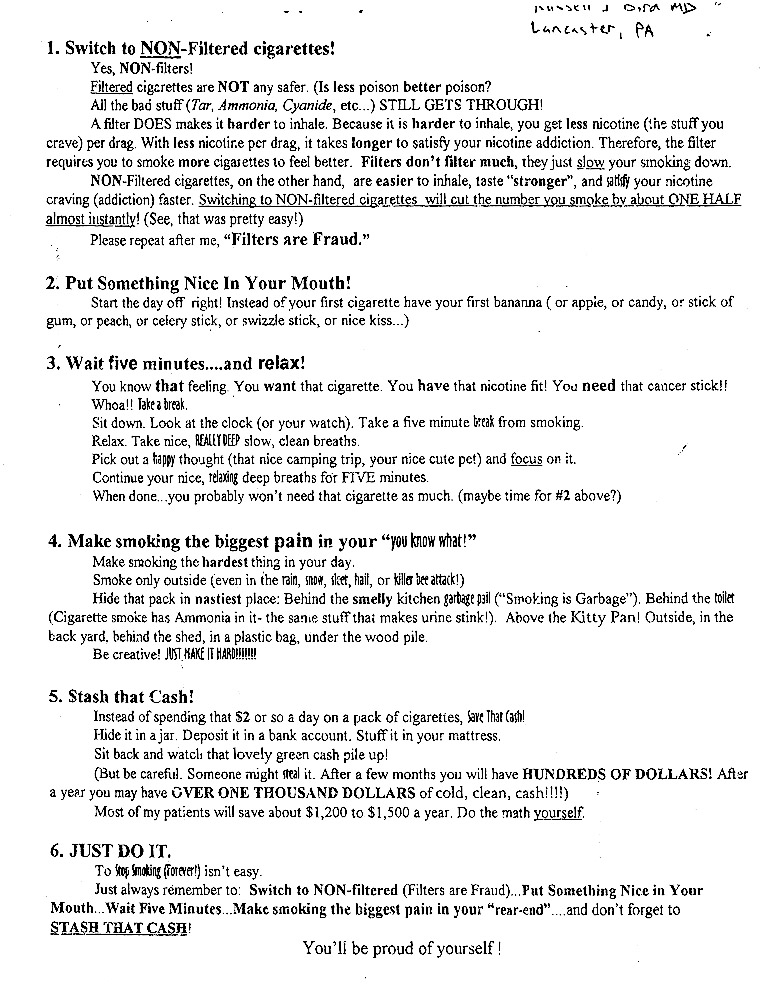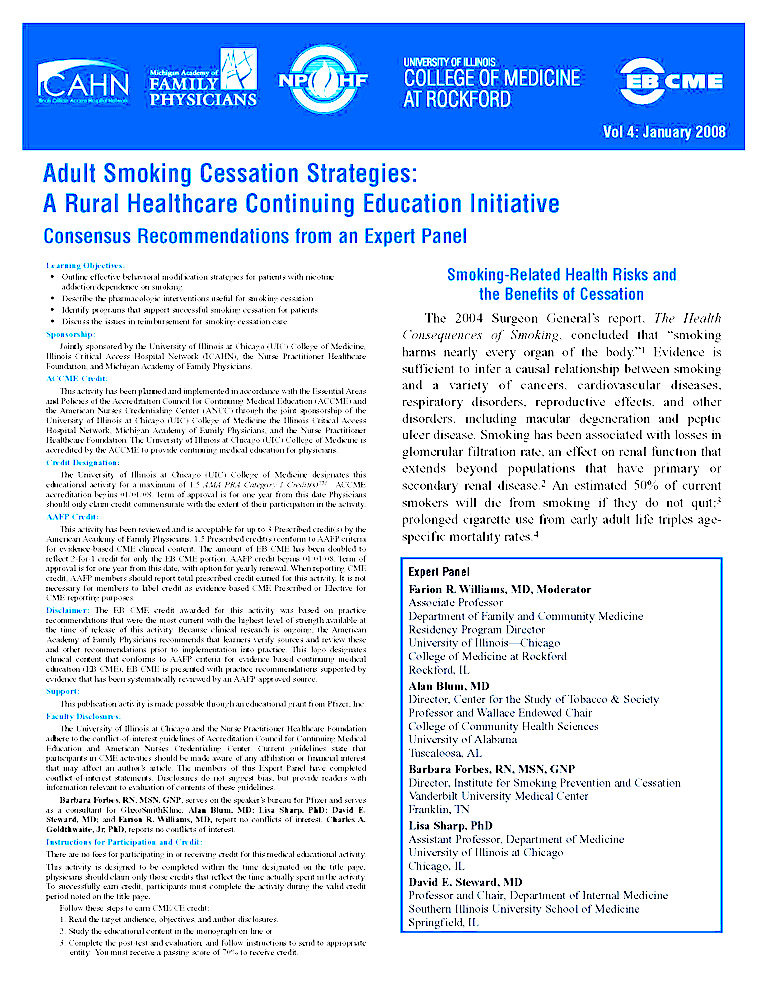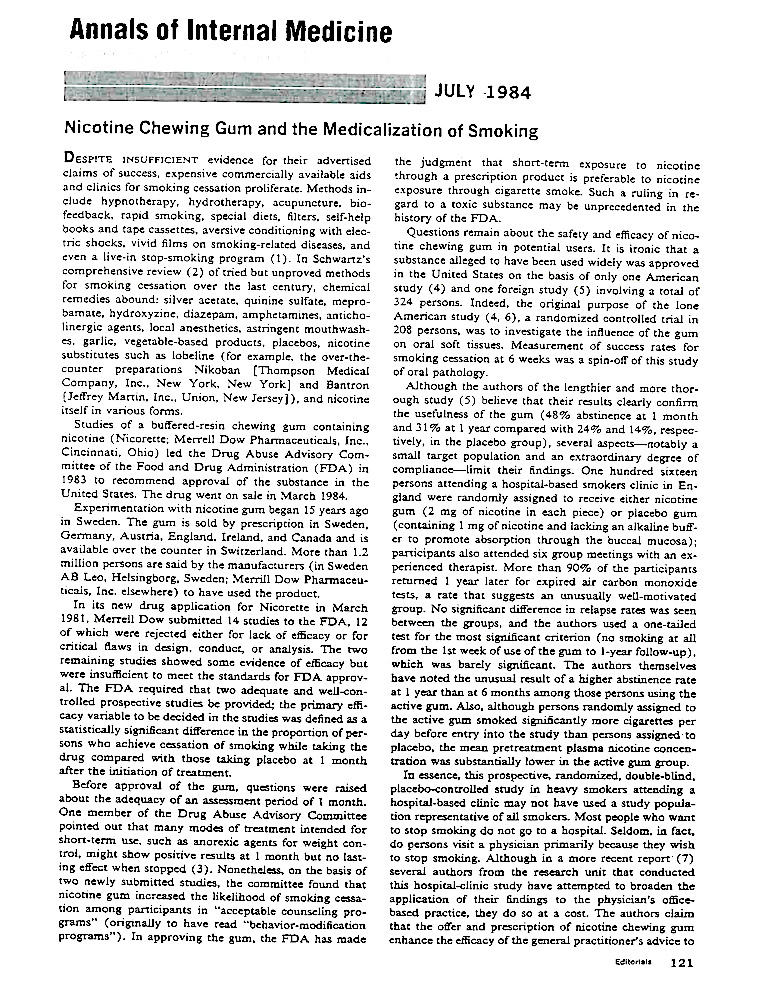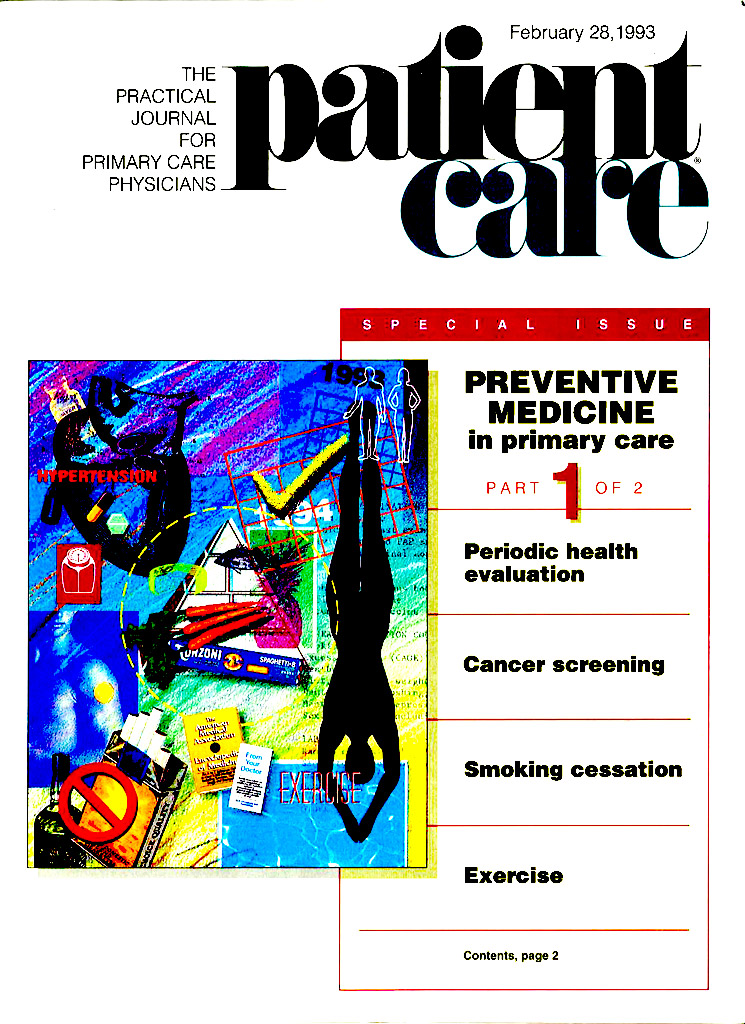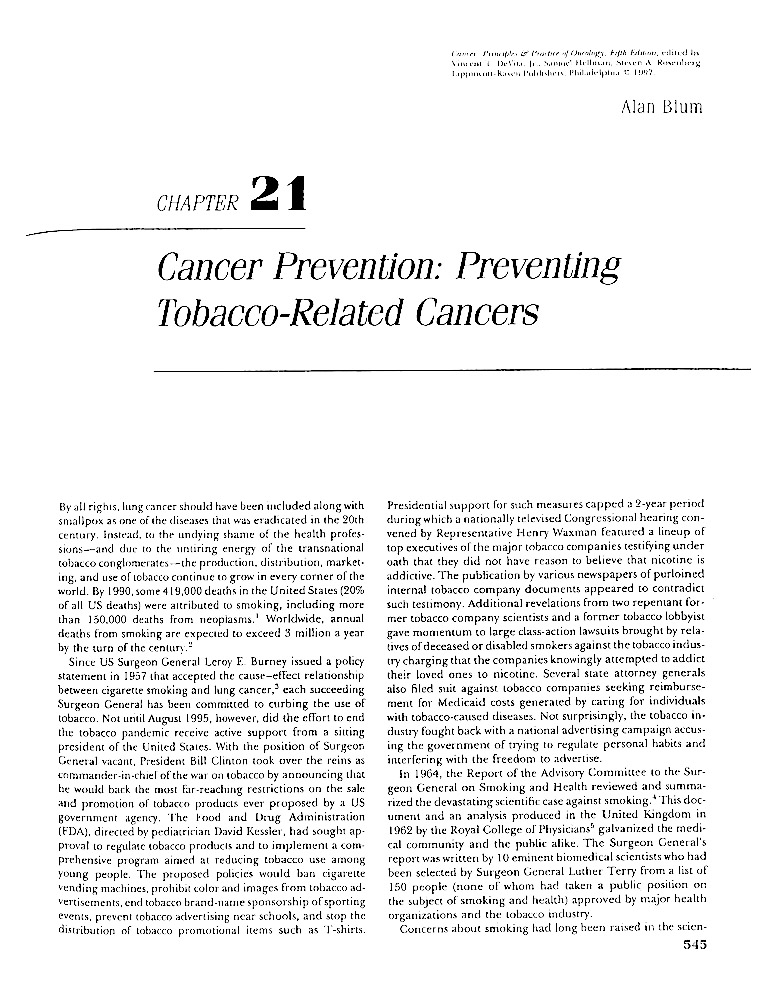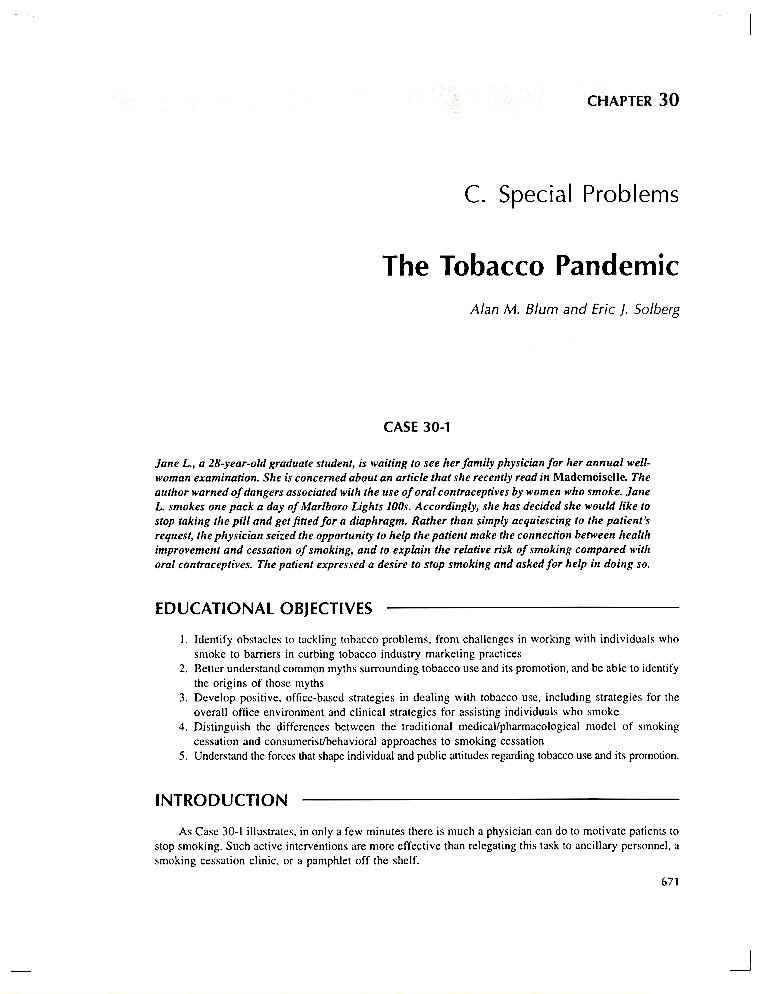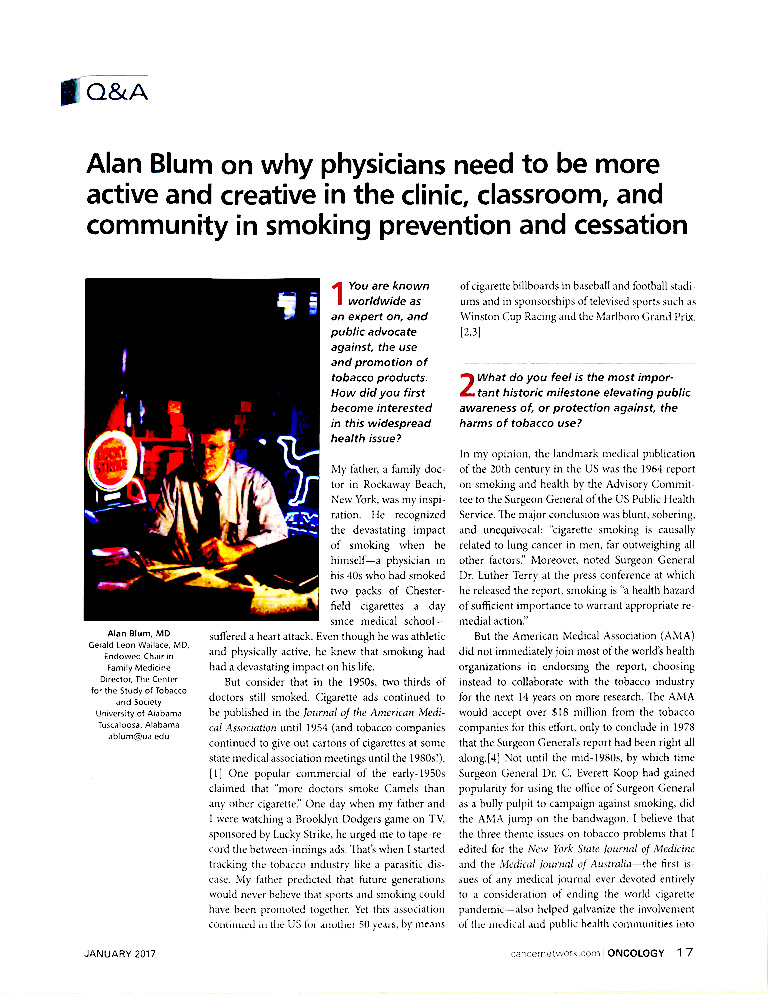Partial bibliography of textbook chapters and articles on smoking cessation by Alan Blum, MD
Chapters
Blum A: Approaches to patients who smoke. In: Rakel RE ed., Essentials of Family Practice. Philadelphia: W.B. Saunders. pp 436-439,453;1992.
Blum A: Approaches to patients who smoke. In: Rakel RE ed., Essentials of Family Practice. Philadelphia: WB Saunders. pp 588-592;1998.
Rakel RE, Blum A: Nicotine addiction. In: Rakel RE ed., Textbook of Family Practice. Fourth edition. Philadelphia: WB Saunders. pp 1612-1622;1990.
Rakel RE, Blum A: Nicotine addiction. In: Rakel RE, ed. Textbook of Family Practice. Fifth edition. Philadelphia: WB Saunders. pp 1549-1564;1995.
Blum A, Rakel R: Nicotine Addiction. In Rakel’s Textbook of Family Practice, Sixth edition. Philadelphia: WB Saunders. pp 1523-38;2002.
Blum A: Tobacco and Cancer. In: DeVita et al, eds. Cancer: Principles and Practice of Oncology. 4th edition. Philadelphia: JB Lippincott. pp 480-491;1993.
Blum A: Preventing tobacco-related cancers. In: DeVita et al, eds.Cancer: Principles and Practice of Oncology, Fifth edition. Philadelphia: J.B. Lippincott. pp 545-557;1997.
Blum A.: Tobacco promotions to minority groups. In: Report of the Surgeon General on Tobacco and Health: Reducing Tobacco Use Among African Americans, American Indians/Alaska Natives, Asian Americans/Pacific Islanders, and Hispanics. Washington: Department of Health and Human Services. 1998.
Blum A, Solberg EJ: Tobacco. In: Mengel M, Holleman W, eds. Fundamentals of Clinical Practice. New York: Plenum. 1997.
Blum A, Solberg E: The tobacco pandemic. In: Mengel M, Holleman W, eds. Fundamentals of Clinical Practice. Second edition. New York: Kluwer Academic/Plenum. pp 671-87;2002.
Blum A, Geyer JD: Tobacco and stroke. In: Geyer JD, Gomez CR, eds. Stroke: A Practical Approach. Philadelphia: Lippincott Williams & Wilkins. pp 33-38;2009.
Journal articles
Blum A: Butting in where it counts. Hospital Physician. 1980;16(4):22-35.
Blum A: A consumerist approach to smoking cessation. Tobacco and Health 1990: The Global War Health Dept W Australia, Perth, Western Australia, 1990;820-822.
Blum A: Consumer advocacy: a crafty approach to counseling. Patient Care. February 28, 1993:80-83
Blum A: Nicotine patches and nicotine gum: deja vu all over again? American Family Physician. 1992;45:2493-2494.
Blum A, Solberg E: The role of the family physician in ending the tobacco pandemic. Journal of Family Practice 1992;34:697-700.
Blum A: Role of the health professional in ending the tobacco pandemic: clinic, classroom, and community. Journal of the National Cancer Institute Monograph. No. 12. 1992;37-43.
Williams F, Blum A, Forbes B, Sharp L, Stewart D: (monograph) Adult Smoking Cessation Strategies: A Rural Healthcare Continuing Education Initiative. Consensus Recommendations from an Expert Panel. University of Illinois College of Medicine at Rockford and Michigan Academy of Family Physicians, 2008.

